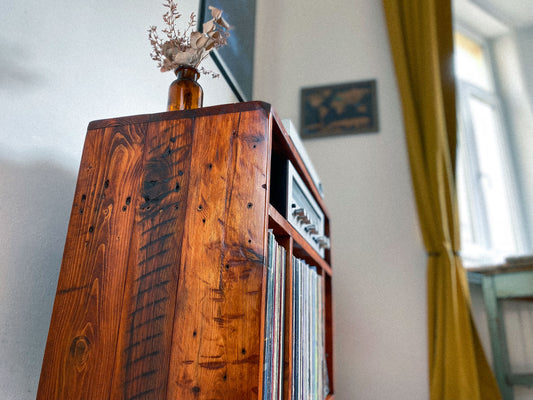
Most of the time people use pallets as a cheap and quick way to make simple beds, tables or sofas on their own. Typically it consists of a few pallets stacked together and painted with color.

It is a tough material to work with - hard to manipulate with, often broken and old, the nails are rusty and disassambling them requires a great deal of patience (and force). It is the very essence of pallet habera creations though as the pallet furniture aesthetics are not about perfection. You will not find machine-like symmetry or clean designs here.

The beauty lies in „rough edges“ - unevennes, nail holes, small cracks, traces of original industrial purpose and other imperfections. All of that makes every piece an utterly unique one.

I exclusively use pallets that are not usable for their original purpose - giving a new life to a waste material is the main idea here. I use primarily EUR pallets for their unified dimensions.. Every single process in the making is done solely by myself in my little workshop. Everything is completely handmade.
the process.
-

Old pallets are disassembled to individual planks.
-

All the nails, almost exclusively rusty as hell, are removed.
-

The planks are sanded in very dusty process while preserving the unique used look of every particular plank.
-

The planks are used to create a particular table model. All the edges and joints are rounded.
-

Fantastic German natural oils by BIOFA are used as a stain color.
-

Natural hard wax oil by BIOFA is used as a final protective layer.
-

Special colored screws are used to give it more unique look.
-

Steel hairpin legs complete the retro industrial look of the table.
making of.






logo.
-

The pallet habera logo is actually based on an embossed trace that is left by a small carpenter's vice I am using.
-

I realized it pefectly represents the tables as it resembles retro radio tuner and the shape of my original table.
and these are the results.
-
"The Original One" record player table
Regular price From €435,00 EURRegular priceUnit price per -
"The One with the Top" record player table
Regular price €655,00 EURRegular priceUnit price per -
"The Compact One" record player table
Regular price €455,00 EURRegular priceUnit price per -
"The Box" record player table
Regular price €325,00 EURRegular priceUnit price per



















